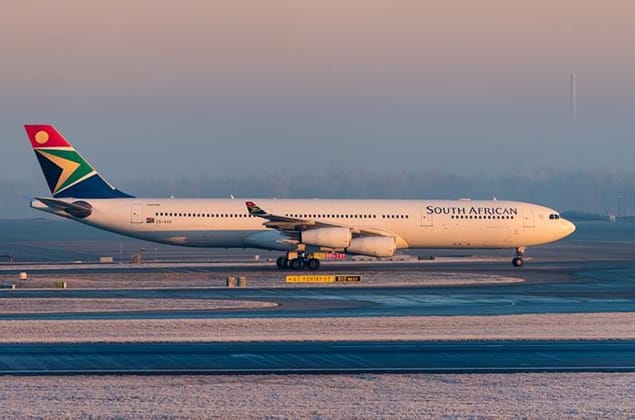Airbus A340-300 Specifications & Booking
Overview of the Airbus A340-300
The Airbus A340-300 is a commercial aircraft manufactured by European aerospace giant Airbus. It belongs to the A340 family, which consists of long-range wide-body jet airliners. The primary purpose of the A340-300 is to transport passengers and cargo over long distances. Its first flight took place on June 24, 1993, marking a significant milestone in its development.
Technical Specifications
Here are some key technical specifications for the Airbus A340-300:
- Dimensions:
- Length: 63.7 meters (209 ft 1 in)
- Wingspan: 60.3 meters (198 ft 2 in)
- Height: 16.4 meters (53 ft 10 in)
- Weight:
- Empty weight: 124,000 kg (273,000 lbs)
- Maximum takeoff weight: 174,000 kg (384,000 lbs)
- Engines:
- Type: Four turbofan engines from General Electric
- Thrust: 64,300 N (14,500 lbf) each
- Fuel efficiency: Up to 30% better than competing aircraft
- Performance:
- Maximum speed: Mach 0.82 (647 mph)
- Range: Up to 7,700 nautical miles (14,300 km)
- Cruising altitude: Up to 41,000 feet (12,500 meters)
- Capacity:
- Pax capacity: 250-320 passengers
- Cargo capacity: Up to 45.4 cubic meters (1,600 cu ft)
- Crew: Two pilots and three flight attendants
Design and Features
The Airbus A340-300 boasts several innovative design elements and features that set it apart from other aircraft. Its distinctive fuselage design allows for increased fuel efficiency, while the raked wingtips reduce drag and improve aerodynamics. The aircraft also features advanced avionics systems, including a fly-by-wire flight control system.
History and Development
The Airbus A340-300 has an interesting history that spans over three decades. Key milestones include:
- First flight: June 24, 1993
- Certification: October 19, 1995
- Entry into service: April 18, 1996 (with Air France)
- Challenges faced during development: Overcoming technical issues and meeting stringent safety regulations
- Significant upgrades or variants: The A340-300 has undergone various upgrades to improve performance, fuel efficiency, and passenger comfort
Operational Use
The Airbus A340-300 is used by several airlines and organizations around the world. Some notable operators include:
- Air France: One of the largest operators of the A340-300, with a fleet of over 20 aircraft
- Lufthansa: Operates a smaller fleet of A340-300s on long-haul routes
- Other airlines and organizations: Use the A340-300 for various purposes, including passenger transport, cargo operations, and special missions
Interesting Facts
Here are a few interesting facts about the Airbus A340-300:
- The A340-300 has a unique "drooping" nose design to reduce drag and improve aerodynamics
- In 2004, an A340-300 set a record for the longest non-stop commercial flight, covering over 17 hours and 14,000 kilometers (8,700 miles) from Singapore to Frankfurt
- The A340-300 has made several appearances in popular culture, including in movies like "Air Force One" (1997) and TV shows like "The West Wing" (1999-2006)
Frequently Asked Questions
What makes the Airbus A340-300 unique?
The A340-300's unique design features, such as its drooping nose and raked wingtips, provide increased fuel efficiency and improved aerodynamics. Additionally, its advanced avionics systems and fly-by-wire flight control system make it a highly reliable and efficient aircraft.
How much does the Airbus A340-300 cost?
The estimated price range for an A340-300 is between $100 million and $150 million, depending on configuration, customization, and other factors. However, this figure may vary due to market conditions and individual aircraft specifications.
What is the range of the Airbus A340-300?
The A340-300 has a maximum range of around 7,700 nautical miles (14,300 km), making it suitable for long-haul flights across different regions and continents. Its fuel efficiency also allows for longer flight times with minimal fuel consumption.
Is the Airbus A340-300 still in service?
The A340-300 is gradually being retired from commercial service as newer, more efficient aircraft enter the market. However, some airlines continue to operate smaller fleets of A340-300s for specific routes or missions, and the aircraft remains a reliable and efficient option for certain operations.





